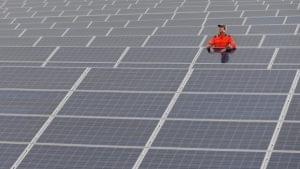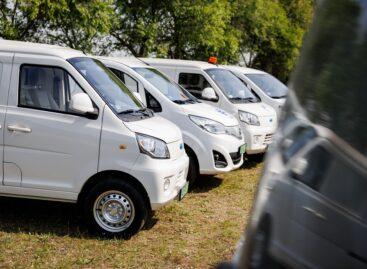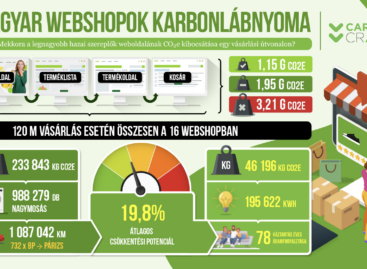Hungarian energy storage is gaining momentum: industrial responses to solar peaks are arriving
The Hungarian solar park is breaking records, but at the same time, the development of energy storage capacities is becoming increasingly urgent – this is shown by the two recently delivered high-performance industrial battery plants and the progress of the related government programs. The goal is to efficiently store the electricity generated during sunny hours and then use it when it is really needed – points out the VG.hu article.
 A new solar record was set on June 25: Hungarian production increased to 6,245 megawatts, and around noon, industrial solar power plants were able to cover the country’s electricity demand on their own – announced the Ministry of Energy. However, such peak performances also cause difficulties in system management: around noon, the price of the electricity market decreases, and then demand increases as the power of solar power plants decreases, which forces the country to make expensive imports. The key to the solution is energy storage.
A new solar record was set on June 25: Hungarian production increased to 6,245 megawatts, and around noon, industrial solar power plants were able to cover the country’s electricity demand on their own – announced the Ministry of Energy. However, such peak performances also cause difficulties in system management: around noon, the price of the electricity market decreases, and then demand increases as the power of solar power plants decreases, which forces the country to make expensive imports. The key to the solution is energy storage.
The answer was not long in coming: at the end of June, Mavir handed over a network-integrated energy storage facility in Szolnok, which, with its 20 megawatt output and 60 megawatt-hour capacity, can balance out daily production fluctuations. A few days earlier, the MET group announced another energy storage facility, this time with a 40 megawatt output and 80 megawatt-hour capacity, in the Dunamenti Power Plant area. The latter is not their first facility of its kind in the region, and the scale of the investment is well illustrated by the fact that the current units together could provide all of Budapest’s public lighting for four hours.
The installation of the storage facilities is supported not only from a technological but also from a regulatory perspective: the Jedlik Ányos Energy Program provides a budget of more than 230 billion forints for residential and corporate investments. As part of this, for example, energy storage facilities have been installed in 12,000 households so far, with a total capacity of 109 megawatt-hours. The program will soon open another 50 billion forints tender opportunity for industrial energy storage, and a national storage capacity of 500 megawatts could be available next year, on the way to the 1,000 megawatts target set for 2030.
In addition to storage, developments are also underway at other points in the electricity system. In May, Mavir handed over Hungary’s largest 400/132 kilovolt substation in Gödön, which was completed with an investment of 34.3 billion forints. Network developments are crucial for security of supply: new substations and switching stations are being built, existing ones are being expanded, new transformers are being installed, and international connections are being developed, for example towards Serbia, Romania and Slovakia.
Important developments are also underway in the private sector. E.ON handed over its fully automated substation in Várpalota two weeks ago, which will also provide power to the Várpalota Defence Industrial Park. The 4 billion forint investment was implemented within the framework of the Danube InGrid EU project and includes two 25 megavolt-ampere transformers and indoor switchgear. The company has built or expanded 12 new substations in its service area since 2021, with more deliveries expected this year.
Related news
EM: the government supports investments aimed at recycling waste
🎧 Hallgasd a cikket: Lejátszás Szünet Folytatás Leállítás Nyelv: Auto…
Read more >EM: more green cars were on the road by the end of September than in the entire record year of last year
🎧 Hallgasd a cikket: Lejátszás Szünet Folytatás Leállítás Nyelv: Auto…
Read more >EM: more than 8,000 applicants in the corporate e-car program
🎧 Hallgasd a cikket: Lejátszás Szünet Folytatás Leállítás Nyelv: Auto…
Read more >Related news
Investment dumping is coming in the food industry
🎧 Hallgasd a cikket: Lejátszás Szünet Folytatás Leállítás Nyelv: Auto…
Read more >It turns out which online food ordering platform websites are the most sustainable
🎧 Hallgasd a cikket: Lejátszás Szünet Folytatás Leállítás Nyelv: Auto…
Read more >Customers are also looking for the record-breaking iPhones in refurbished versions
🎧 Hallgasd a cikket: Lejátszás Szünet Folytatás Leállítás Nyelv: Auto…
Read more >






